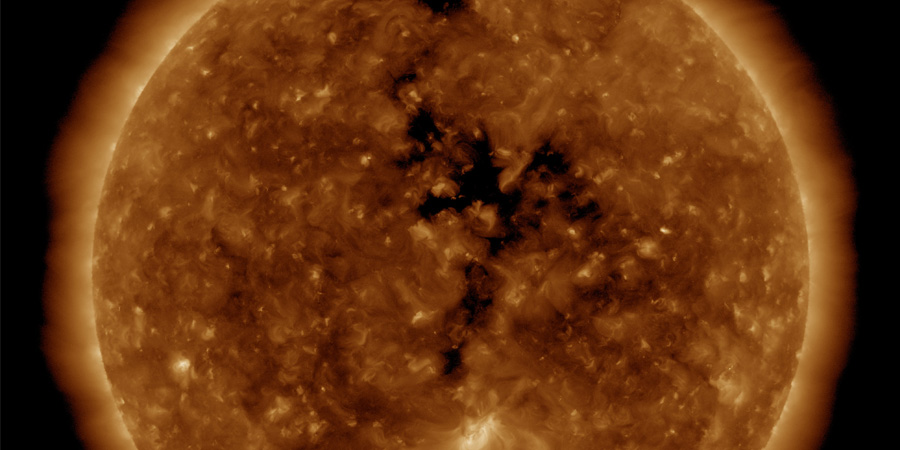Coronal hole faces Earth
Monday, 18 November 2019 20:12 UTC

A familiar coronal hole is facing our planet today. This is indeed the coronal hole that has been the source of quite a few geomagnetic storms during the past few months.
A northern hemisphere coronal hole is facing Earth. Enhanced solar wind could arrive in ~3 days - Follow live on https://t.co/bsXLidnzGh pic.twitter.com/jPGqoZ1J6f
— SpaceWeatherLive (@_SpaceWeather_) November 18, 2019
...but in all honesty... the good news ends there. If you take a look at the coronal hole today (as seen by SDO in the tweet above) and compare it with how it looked like during the previous rotation we have to conclude it has drastically diminished in size during the past few weeks. Based on the limited data that we have available from STEREO Ahead and the way this coronal hole developed, it seems much less likely that we will see similar geomagnetic storm conditions this time around. As a matter of fact, even active geomagnetic conditions (Kp4) seem a stretch at this time but we give this coronal hole the benefit of the doubt as it has always been a reliable source of geomagnetic activity. A Co-rotating Interaction Region (CIR) ahead of the high speed stream will likely arrive on Wednesday (20 November) and might spark some high latitude aurora. Geomagnetic storming does not seem likely this time around but we hope to be surprised!
Thank you for reading this article! Did you have any trouble with the technical terms used in this article? Our help section is the place to be where you can find in-depth articles, a FAQ and a list with common abbreviations. Still puzzled? Just post on our forum where we will help you the best we can!
Latest news
Latest forum messages
Support SpaceWeatherLive.com!
A lot of people come to SpaceWeatherLive to follow the Sun's activity or if there is aurora to be seen, but with more traffic comes higher server costs. Consider a donation if you enjoy SpaceWeatherLive so we can keep the website online!

Space weather facts
| Last X-flare | 2025/03/28 | X1.1 |
| Last M-flare | 2025/04/01 | M2.5 |
| Last geomagnetic storm | 2025/03/27 | Kp5 (G1) |
| Spotless days | |
|---|---|
| Last spotless day | 2022/06/08 |
| Monthly mean Sunspot Number | |
|---|---|
| February 2025 | 154.6 +17.6 |
| April 2025 | 152.5 -2.1 |
| Last 30 days | 130.7 -17.9 |


